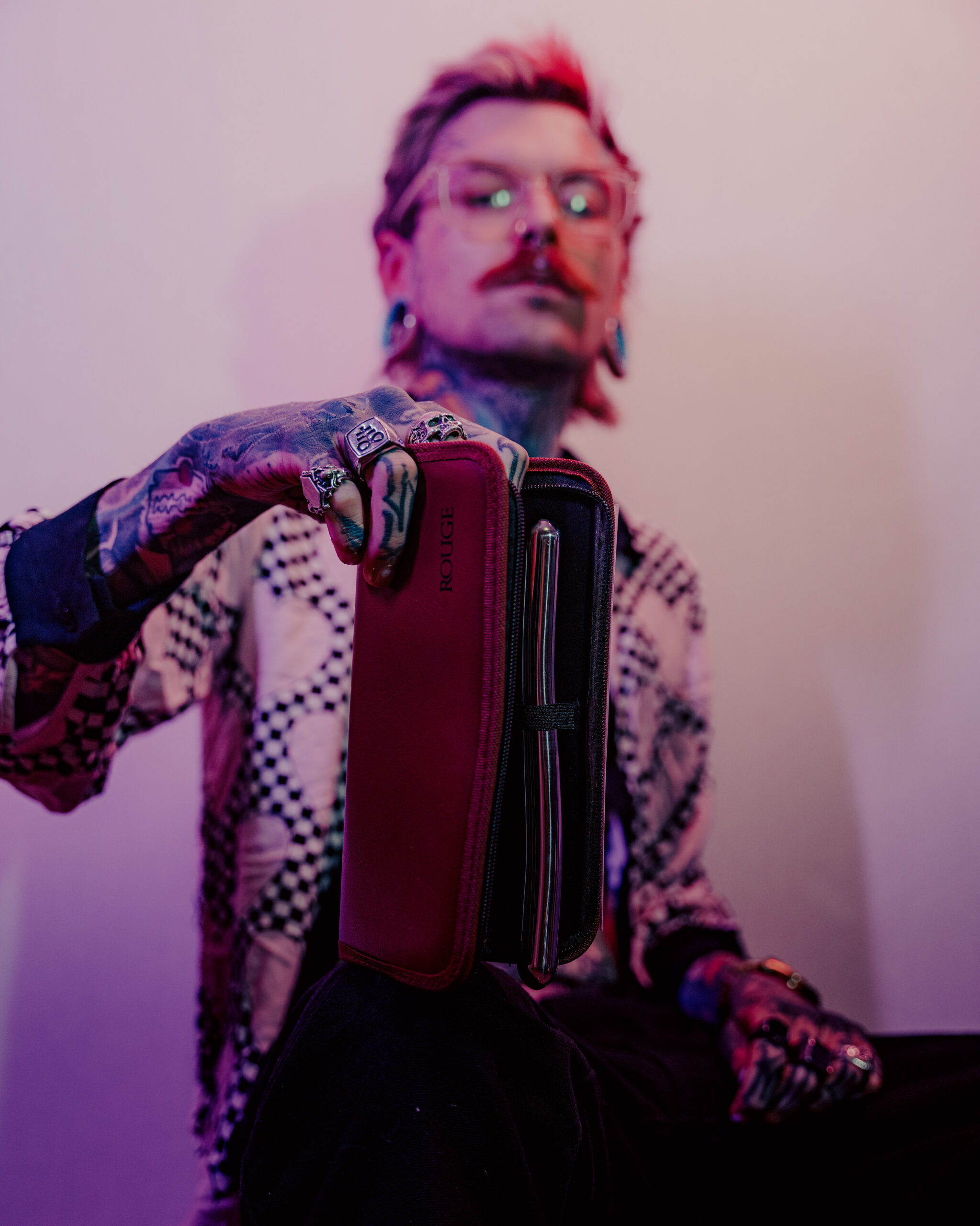Challenging Binary Thinking
Challenging binary thinking about sexuality means moving beyond the restrictive confines of labels like “gay” or “straight,” which assume a rigid dichotomy between male and female partners.
Pansexuality, with its embrace of attraction to all genders, directly confronts this binary framework. It asserts that sexual orientation is not defined by the gender identity of the person one is attracted to, but rather by a broader spectrum of emotional and physical connection.
This challenges us to reconsider how we categorize and understand human experiences. We must move away from simplistic “either/or” thinking and recognize that attraction can be complex and multifaceted.
Pansexuality also highlights the social construct nature of gender itself. By rejecting the limitations imposed by traditional binary categories, it encourages us to explore and embrace the fluidity and diversity of gender identity and expression.
Understanding pansexuality requires acknowledging that individuals can experience attraction in ways that defy neat categorization. It’s about recognizing the spectrum of human desire and celebrating the beauty of individual experiences rather than trying to force them into predefined boxes.
This shift in perspective has the potential to create a more inclusive and accepting society, one where individuals are free to express their identities without feeling constrained by societal expectations or labels.
Pansexuality disrupts the traditional *binary framework* of sexual orientation, forcing us to reconsider ingrained assumptions about attraction based on gender. By encompassing attraction to all genders, pansexuality transcends the limitations of labels that categorize people as strictly “male” or “female,” and consequently, their perceived desirability as romantic or sexual partners.
*Fluid identities* further complicate this binary thinking. Unlike the fixed categories often associated with sexuality, gender identity and expression exist on a spectrum. Individuals may identify as *transgender*, *non-binary*, *genderfluid*, or *agender*, demonstrating that gender is not inherently tied to biological sex and can be experienced in diverse and evolving ways.

Pansexuality, therefore, aligns with this broader understanding of fluid identities. It acknowledges that attraction is not confined to rigid categories and that individuals can experience it in complex and multifaceted ways. This challenges the notion that *heterosexuality*, *homosexuality*, and *bisexuality* constitute the only valid forms of sexual orientation, revealing a more inclusive and nuanced reality.
Furthermore, pansexuality highlights the artificiality of gender-based divisions. By recognizing attraction beyond the binary, it encourages us to deconstruct societal norms and expectations surrounding intimacy. It prompts us to consider whether these norms are truly serving us or limiting our understanding of human connection and desire.
Ultimately, challenging binary thinking in sexual orientation and embracing fluid identities paves the way for a more equitable and accepting society. It recognizes the diversity of human experience and allows individuals to express their identities authentically without fear of judgment or prejudice.
Redefining Relationships
Pansexuality, as a sexual orientation encompassing attraction to all genders, fundamentally challenges our traditional understanding of sexual orientation and its associated stereotypes. It dismantles the rigid binaries of male/female and heterosexual/homosexual that have long dominated societal discourse.
The concept of pansexuality compels us to confront the narrow definitions of “man” and “woman,” and the limiting labels of “gay,” “straight,” or “bisexual.” It pushes us beyond these categories, recognizing that human attraction exists on a spectrum and is not confined by rigid gender constructs.
Historically, stereotypes have played a significant role in shaping public perception of sexuality. The idea of the “typical” gay man or lesbian, often rooted in prejudice and misinformation, has contributed to the marginalization and misunderstanding of LGBTQ+ individuals.

Pansexuality challenges these harmful stereotypes by demonstrating the fluidity and diversity of human attraction. It highlights that individuals within any gender identity can experience attraction to others across the entire spectrum of genders.
Furthermore, pansexuality encourages us to rethink our assumptions about relationships. By embracing attraction beyond traditional gender boundaries, it expands the possibilities for connection and intimacy.
The acceptance of pansexuality fosters a more inclusive and understanding society where individuals are free to explore their identities and express their attractions without fear of judgment or discrimination.
Ultimately, pansexuality serves as a catalyst for broader conversations about gender, sexuality, and the need to challenge societal norms that perpetuate exclusion and prejudice.
Redefining relationships and expanding our understanding of intimacy are crucial aspects of evolving social norms, especially when examining how identities like pansexuality challenge traditional views.
Pansexuality, the attraction to people regardless of their gender identity or expression, disrupts the binary framework that often categorizes sexual orientation. This disruption compels us to rethink the very foundations of how we define and understand relationships and intimacy.

Here’s how pansexuality redefines these concepts:
-
Challenging Gendered Expectations: Pansexuality dismantles the assumption that attraction is inherently linked to a specific gender. This challenges societal expectations and norms around what constitutes an attractive partner, forcing us to look beyond superficial labels.
-
Embracing Fluid Identities: Pansexual individuals often navigate fluid and multifaceted identities. Their experiences highlight the spectrum of human attraction and demonstrate that sexual orientation is not always fixed or easily categorized.
-
Expanding Intimacy Beyond Physical Attraction: While physical attraction plays a role in any relationship, pansexuality emphasizes the importance of emotional connection, intellectual compatibility, and shared values. how to use double cock ring This broader definition of intimacy moves beyond purely physical aspects.
-
Promoting Inclusivity and Acceptance: By embracing diverse experiences and challenging binary thinking, pansexuality promotes a more inclusive and accepting understanding of relationships. It encourages empathy and respect for individuals regardless of their gender identity or sexual orientation.
Ultimately, the acceptance and celebration of pansexuality contribute to a more nuanced and comprehensive understanding of human connection. It allows us to break free from rigid societal constructs and embrace the complexity and beauty of diverse relationships.
Social Impact & Acceptance
Pansexuality, a sexual orientation characterized by attraction to people regardless of their gender identity or expression, stands as a powerful challenge to traditional notions of sexuality. It disrupts the binary framework that often dominates societal discourse, forcing us to confront deeply ingrained assumptions about love, desire, and belonging.
The social impact of pansexuality is multifaceted. On one hand, it fosters inclusivity by recognizing and celebrating the diversity of human experience. By dismantling the rigid categories of “male” and “female,” pansexuality allows individuals to express their attraction authentically, breaking free from the confines of societal expectations.
On the other hand, pansexuality encounters significant resistance in societies that adhere to heteronormative values. The concept of attraction beyond the gender binary can be unsettling to those who hold traditional views, leading to prejudice, discrimination, and even violence against pansexual individuals.
Navigating societal norms as a pansexual person can be challenging. Many face internalized homophobia or biphobia, grappling with feelings of shame or fear about expressing their true identity. The lack of representation in media and popular culture can contribute to feelings of isolation and invisibility.
However, the growing visibility of pansexuality is slowly changing the landscape. Increased awareness through education, activism, and advocacy efforts is gradually dismantling harmful stereotypes and promoting acceptance.
The journey toward full social integration for pansexual individuals requires ongoing dialogue, empathy, and a willingness to challenge preconceived notions about sexuality. It necessitates creating safe spaces where pansexual people can express themselves freely and authentically.
Ultimately, accepting pansexuality as a valid and natural expression of human sexuality is essential for building a more inclusive and equitable society that celebrates diversity in all its forms.
Pansexuality, a sexual orientation characterized by attraction to people regardless of their gender identity or expression, poses a significant challenge to traditional understandings of sexuality.
It pushes against the binary framework that often categorizes individuals as either heterosexual or homosexual, compelling us to reconsider the rigid structures we’ve built around how we define and perceive relationships.
This challenge extends beyond individual identities, impacting societal norms and expectations.
Here’s how pansexuality contributes to a broader conversation about social impact, acceptance, and the fight for visibility and equality:
-
Deconstructing Gender Binary: Pansexual individuals actively dismantle the notion that sexual attraction is inherently linked to gender.
This challenges the societal assumption that there are fixed, separate categories of “male” and “female,” prompting a more fluid and inclusive understanding of gender identity.
-
Expanding the Definition of Love: Pansexuality embraces love and attraction in its entirety, transcending limitations imposed by gender.
It emphasizes that love is not confined to specific gender expressions or identities, fostering a more compassionate and accepting view of relationships.
-
Challenging Hetero-normativity: By normalizing non-heterosexual experiences, pansexuality disrupts the societal dominance of heteronormative values.
It encourages us to question why heterosexuality has been privileged and how this bias impacts individuals from marginalized communities.
-
Visibility & Representation: Increased visibility of pansexual people in media, education, and everyday life is crucial for fostering acceptance.
Representation allows for a better understanding of pansexuality and helps dismantle harmful stereotypes and misconceptions.
-
Promoting Inclusivity & Equality: The fight for pansexual visibility is intertwined with the broader struggle for LGBTQ+ rights.
It advocates for equal treatment, protection from discrimination, and the right to live authentically without fear or prejudice.
Ultimately, pansexuality’s challenge extends beyond sexual orientation; it compels us to examine the very foundations of how we categorize and understand human relationships.
It calls for a society that embraces diversity, celebrates individuality, and ensures that everyone, regardless of their attractions or identities, feels seen, valued, and respected.
Explore what’s written in full
Find everything here
- Skin Injectables Near West Clandon, Surrey - May 18, 2025
- How To Care For Your Skin After Marionette Lines Fillers In Kingston Upon Thames - May 16, 2025
- Botox Brow Lift In Walton-on-Thames, Surrey - May 16, 2025
